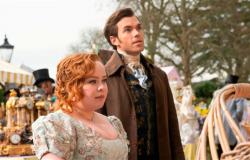Once upon a time there was a country without contemporary art museums. There were no white cubes, nor pieces that dialogue with each other, as demanded by the new museology that was triumphing in New York.
This story that we are going to tell you is so unlikely and magical as real; a team effort made up entirely of artists, although one of them shines with his own light: Fernando Zóbel (Manila, Philippines, 1924-Rome, 1984).
It couldn’t be anywhere else but an abyss. Our version of Frank Lloyd Wright’s Fallingwater House is the Hanging Houses of Cuenca. Pure precipice. Emotional, political, pictorial, also in which artists lived in the Spain of economic and intellectual precariousness. Zóbel rescued abstract painting from falling down the ravine, and gave him a house.
Museum entrance, 1967
Jaume Blassi
Before there were some attempts: in 1951, in Madrid, a National Museum of Contemporary Art emerged without continuity, which encountered difficulties of all kinds. In Barcelona, from 1960 to 1963, a private contemporary museum was open in the dome of the Coliseum cinema and in 1963 the installation of the Picasso Museum began in the Berenguer Palace, which would exhibit the collection of Jaume Sabartés. These initiatives without public support They struggled, unsuccessfully, to survive.
Spanish Informalism and American Abstract Expressionism gravitated towards that magnetic field described as lingua franca of modernity: the desire for freedom, the exaltation of the individual and the desire for reject conventional forms of beauty They arose as a consequence of the post-war moral crisis, as the Jewish philosopher Theodor Adorno warned, when he stated that after Auschwitz writing poetry had become an act of barbarism.
It was inaugurated on July 1, 1966 with the help of Gerardo Rueda and Gustavo Torner, who acted as conservators.
Antonio Saura, 36 years old, stated in the pages of the magazine time (1966): “When I throw a smear of paint on the canvas I am committing a violation. When I work I become a kind of monster.”
Spanish abstract painting emanated a controlled violence, a unsentimental romanticism of spirals of dark colors that bubbled like blood. Franco was already an ally of the US when Eisenhower visited Spain in 1959 and they sealed a diplomatic alliance.
Las Casas Colgadas, 1967
Jaume Blassi
El régimen reacciona cuando asume que el triunfo del expresionismo simboliza la hegemonía americana y que dialoga en sintonía con los pintores españoles; quienes además triunfaban en el extranjero –en la Bienal de Venecia de 1958 Chillida obtiene el Gran Premio y Tàpies el segundo de pintura–. Un éxito rotundo.
Cuenta Tàpies en sus diarios que escuchó al dictador exclamar en una exposición: “¡Ah, bueno! ¡Mientras hagan las revoluciones así…!”. Parece que Franco se dejaba guiar por su instinto juzgando el carácter, aparentemente apolítico, de esta pintura.
Ante este contexto de Guerra Fría, Fernando Zóbel obró deliberadamente al margen del estado. Viajero incansable, cosmopolita, mecenas y visionario, había estudiado en Harvard humanidades graduándose cum laude con una investigación sobre Lorca.
Cuenta que allí se enamoró de la pintura de Rothko, aunque también le gustaban Rauschenberg y Pollock. En 1958 se establece en España para ser artista. Su pintura, de influencia oriental, elimina lo superfluo declinando líneas esenciales y gestos implosivos; la luz de sus blancos resuena a los sfumati de Da Vinci penetrando en los fondos tenebrosos del Barroco.
Fernando Zóbel en el estudio de Gustavo Torner, 1967
Jaume Blassi
Entretanto viaja con frecuencia a Filipinas donde su familia conserva fructíferos negocios familiares como Cervezas San Miguel. En 1960 funda el Ateneo Art Gallery en la Universidad de Manila para promocionar el arte filipino moderno y contemporáneo.
Mientras en el extranjero la política instrumentalizaba la pintura española, dentro de nuestras fronteras apenas se realizaban esfuerzos para promocionarla. Zóbel comienza su importante colección: Chillidas, Sauras, Feitos, Tàpies… que compra a la pequeña galería madrileña Fernando Fe. De ahí surge la idea de darle al arte abstracto español un museo. Un espacio sostenido por él mismo que sería gestionado con ayuda de otros artistas, lo que más tarde se llamaría la Escuela de Cuenca.
[Aquella locura llamada museo]
The painter Gustavo Torner suggested that he consider the Hanging Houses that were being rehabilitated, to which he responded: “But what am I painting in Cuenca!” Finally the mayor gave him the space in exchange for a symbolic rent. It was inaugurated on July 1, 1966 with the help of Gerardo Rueda and Gustavo Torner, who did the work of conservators, without having much idea of what that could mean.
The museum was filled with modern American and Italian museography, taking into account the architectural peculiarities of that medieval labyrinth. A White Cube that beats in an archaic construction becomes the Museum of Spanish Abstract Art, a space dreamed of, imagined, desired, thought and directed by artists. A miracle turned into a museum.
Antonio Saura: ‘Brigitte Bardot’, 1959
Succession Antonio Saura / Vegap, Madrid, 2024 / Santiago Torralba
Torner and Rueda are joined by Antonio Lorenzo, Eusebio Sempere, Fernando Nuño, Jordi Teixidor and José María Yturralde. The latter arrive on a Vespa from Valencia with some canvases that Zóbel had bought, because all the paintings were paid for, none were donated or given away.
In 1969 the museum was expanded and Carmen Laffón joined as honorary curator and, among others, José Luis Alexanco, Elena Asins, José Manuel Broto, Miguel Ángel Campano, Sarah Grilo, Eva Lootz and Soledad Sevilla joined the collection.
Four years before dying from a heart attack, Zóbel, a visionary, donated the museum’s collection, his archive, drawing notebooks, diaries and library to the Juan March Foundation, which today continues to care for his legacy. In 2022, taking advantage of the building’s conditioning works, it is thought The most beautiful small museum in the worlda traveling exhibition that tells the story of the alignment of the stars that led to a project as beautiful as this one.
The exhibition, which arrives this Friday in Madrid, includes 70 spectacular pieces from the 50s to the 80s by Tàpies, Oteiza, Zóbel, Palazuelo, Saura, Sempere, Cuixart, Lootz and Asins, thus concluding a journey through Granada, Barcelona, Dallas (USA) and Koblenz (Germany).
The exhibition design has been designed to accurately reproduce the abstract museum: its rough walls, its intricate route, its black room and even its library, where you could consult the latest editions of the best international magazines. One last stop before returning home.
The most beautiful small museum in the world
Alfred H. Barr inaugurates the MoMA – the first museum of modern art in the world – 10 days before Black Tuesday of the 29th. He was the first director to envision a museum for the people, which should be based on interdisciplinarity, in addition to applying a new museology based on the ‘white cube’. On December 25, 1966 he visited the Museum of Abstract Art in Cuenca and was fascinated. Eating at the painter Sempere’s house, he whispers to Zóbel that his was “the most beautiful little museum in the world.” Zóbel asks him to repeat it out loud and the diners applaud warmly. They decide to name him honorary curator. In a letter in 1970 he wrote to her: “What you have done is one of the most admirable works of art, as well as brilliant: a remarkable balance between painting, sculpture and architecture.”






